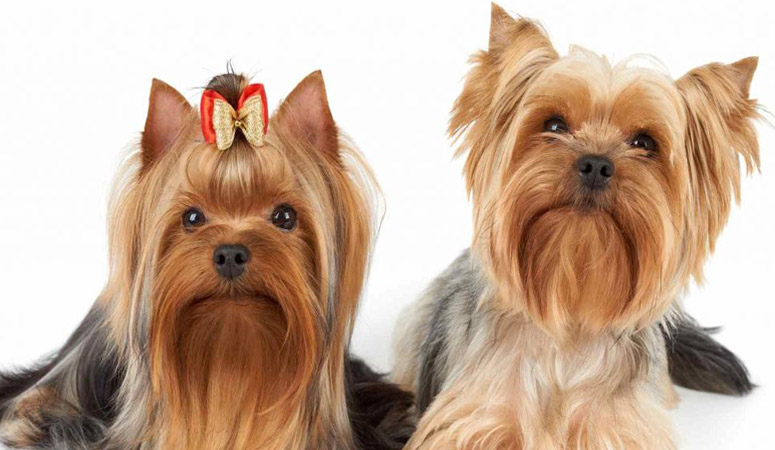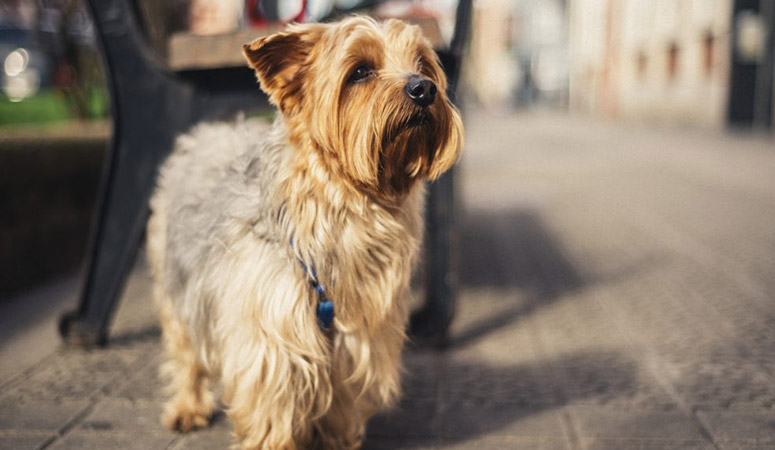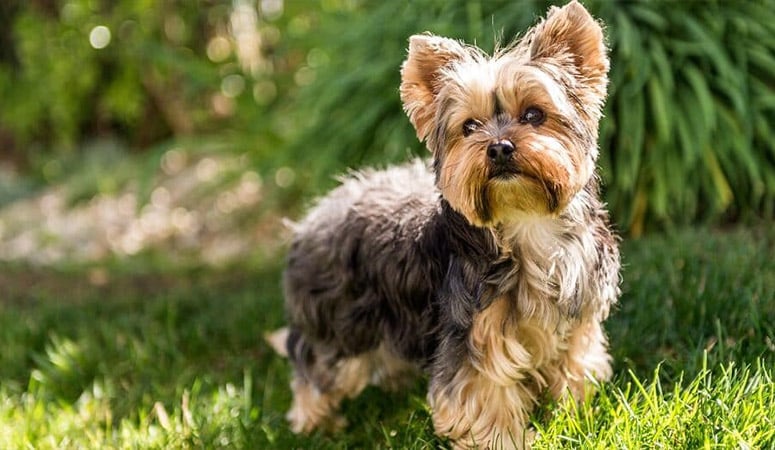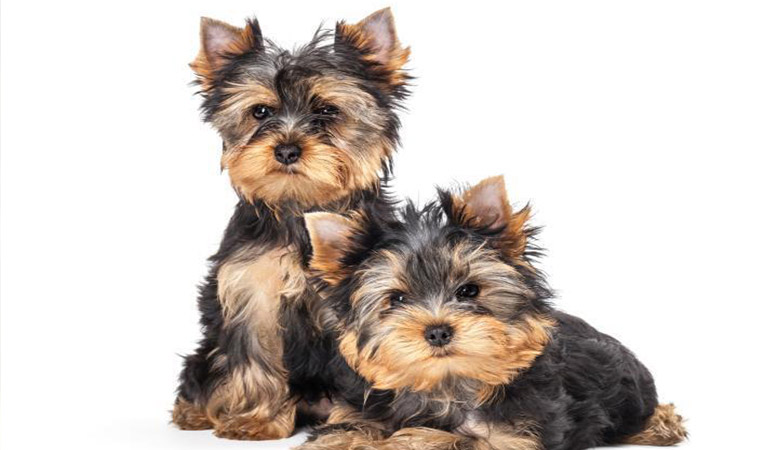Yorkshire Terrier
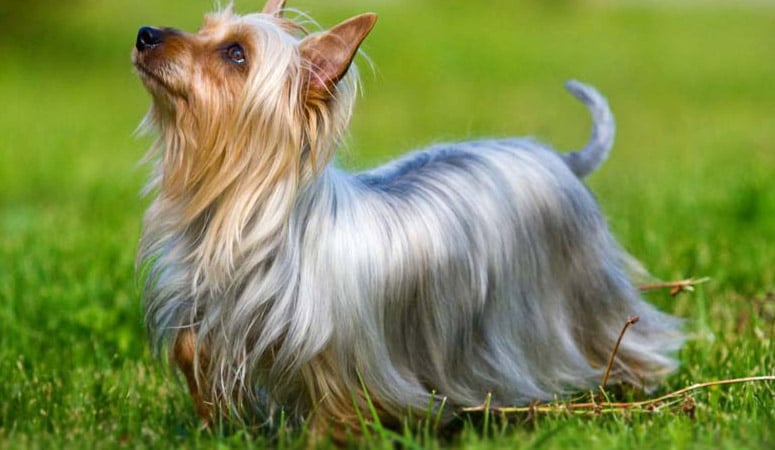
The Yorkshire Terrier is an energetic small dog breed who is known for his brave and determined nature. Their long, silky hair, elegant looks, and suitability to apartment living make them become the most popular toy dog breed in the United States. They are often called “tomboy toys” as they like being in the thick of any activity.
| Other Names | Broken-HaiRed Scotch Terrier, Yorkie |
| Color | Black & Gold, Black & Tan, Blue & Gold, Blue & Tan |
| Height | MALES: 6-7 INCHES. FEMALES: 6-7 INCHES. |
| Weight | MALES: 4-7 POUNDS. FEMALES: 4-7 POUNDS. |
| Life Span | 11-15 years |
| Personality | Affectionate, Sprightly, Tomboyish |
| Exercise | Regular Exercise |
| Origin |
| Popularity | #12 |
| Groom Needs | Specialty/Professional |
| Kids Friendly | Yes with supervision |
| Dog Friendly | Yes with supervision |
| Watch Dog | |
| Family Dog | |
| Litter Size | 4-5 |
Yorkshire Terrier Pictures
Yorkshire Terrier Video
Introduction
A Yorkshire Terrier may be a beautiful and admired breed of house-dogs now, but a good number of us won’t forget that they started out chasing and dispatching rats in mills and mines in the olden days. One of the smallest dog breeds there is, Yorkshire Terriers presents with a tiny package of roughly 7 inches shoulder height and between 4 and 7 pounds weight, both males and females alike.
Nicknamed Yorkies, Yorkshire Terriers are popular as companion dogs and have proven quite their mettle as watchdogs over the years. It struts daintily almost completely shrouded in a glossy and silky coat that can be described as a cocktail between hues from gray and black to fawn and tan. Older varieties also come in a steel blue coat, often trailing on the floor when they padded about.
Despite appearing delicately small and dainty, this breed still possesses every feature of a terrier. Playful and exuberant, there’s no dull moment around them. Find them a companion and a Yorkie would lead a rambunctious life. A Yorkshire Terrier is likely to live up to 14 years on average.
Living with Yorkshire Terrier
It is recommended to brush Soft-haired Yorkshire Terriers every day to prevent mats and keep the coat clean, as their hairs are prone to tangles; silky haired Yorkshire Terriers need to be brushed at least three times per week. And their hair on the upper part of the head should be trimmed short or pulled up into a topknot to avoid eye irritation.
The owner needs to bath your dog weekly to keep his coat beautiful and shiny. When drying your dog, spray the coat with a light conditioner, and you need to give the coat a spritz with a light conditioner when you’re brushing him as well.
Check their ears regularly for the signs of offensive odor, redness, or a brown discharge. These small dogs are prone to dental problems, especially later in life, so give your dog a regular teeth brush and prevent periodontal disease. Their nails grow fast and should be trimmed regularly if the dog does not wear down the toenails naturally.
Though Yorkshire Terrier is a small dog breed, he needs moderate exercise to stay healthy both in body and spirit, such as walks with their owner at a steady pace, or special short bursts of activity, like chasing after a tennis ball in the backyard. This toy dog is very active, and love to interact with both dogs and humans. Owners need to play with your dog and prepare enough toys.
Besides, the owner can take your Yorkie to participate in dog sports such as obedience or agility which also can provide a beneficial activity to keep him healthy and challenge his mind too.
Generally, it is recommended to feed a Yorkshire Terrier with a half to three-quarters cups high-quality dry dog food per day, divided into two meals. There should be clean fresh water at all times. More importantly, the food amount should vary depending on your dog’s weight, activity level, and age.
Some dogs are easy to get overweight, so you need to watch their calorie consumption and weight level all the time. Treats may be an important aid in training, but excessive intake can lead to obesity. Also, owners need to distinguish which human food is safe for dogs and which are not. If you have any problems with your dog’s weight or diet, just consult from your veterinarian.
Yorkshire Terriers are prone to the following health conditions: Patellar luxation, Legg-Perthes disease, Tracheal collapse, Progressive retinal atrophy, Portacaval shunt…
Major concerns: none
Minor concerns: patellar luxation
Occasionally seen: PRA, portacaval shunt, Legg-Perthes, tracheal collapse
Suggested tests:
Patella Evaluation
Ophthalmologist Evaluation
Total Annual Cost: $2410
Cost is estimated for the first year and may vary depending on many factors, such as dog food, health care, leash, collar, licensing, possible fencing, crates, training and obedience classes, dog-walking, grooming, treats, toys, flea, tick, and heart-worm meds, microchips, etc.
Generally, Yorkshire Terriers are willing to accept training, especially if it raises their concerns about performing cute tricks or performing agility or obedience tests. But they can be difficult to housetrain, patience and consistency are very important.
They like squeaky toys, it is important to check the toy every few days to ensure that they haven’t chewed toys open and pulled out the squeaker. Also, they like fetching toys that owners throw for them.
Yorkies respond well to obedience training, but they have stubborn independence that can slow the process. The owner needs to start consistent and patient training from puppyhood and with a lot of dog treats as rewards, and yield the best outcomes.
Yorkshire Terriers can participate in and excel at canine activities such as rally, agility, and obedience, and many Yorkies could serve with the human partners in a role such as therapy work, although they are in small size.
History
The small toy-type Yorkies we now know and keep as pets used to be larger than they are now. They were once mine dogs which helped to tidy up some of the dirty jobs like catching rats around. The origin of the Yorkshire can be traced back to mid-19th century England. Although the Yorkshire county of Northern England has been associated with its origin and name, it wasn’t particularly the place of origin of this breed of dogs but rather the development of Yorkies improved tremendously after they were brought to Yorkshire.
The Yorkshire Terriers are widely considered descendants of the Water-side Terriers with a long blue coat, adorned with flecks of tan or fawn. Prior to the Yorkshire Terriers, ratting breeds consisted of the Clydesdale Terriers and Paisley mainly. In fact, there are claims that Yorkshire Terriers didn’t exist before the arrival of Scottish immigrants into England in the 19th century. Some of them settled in the regions of Yorkshire and Lancashire, working at the mills, and breeding their terrier dogs. It’s from these terrier dogs that Yorkshire Terriers are believed to have found root. After which they hit the show ring for the first time in 1861(though know at the time as the Broken-haired Scotch Terrier).
The American Kennel Club registered its first Yorkshire Terrier in 1885, although they had been recognized as a breed in North America before that time.
Helpful Information
Breed Club: YORKSHIRE TERRIER CLUB OF AMERICA, INC.
Breed Club Link: http://www.theyorkshireterrierclubofamerica.org/
Breed Club Rescue: YTCA Rescue
Breed Club Rescue Link: http://www.theyorkshireterrierclubofamerica.org/aboutYorkies-rescue

